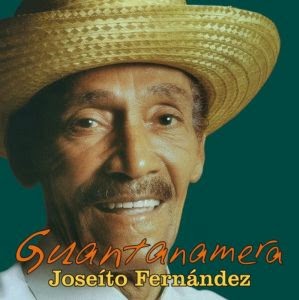I know many, if not all, will disagree with me, but Joseito Fernandez is a bit more my speed of what I enjoy. Cuban music is a whole lot of fun, and with the recent reunited relations with Cuba between American, and needing a warmer song in this cool climate this seemed the perfect song to warm it up!
History: The beginnings of this song are sort of patchy, but Fernandez gets the main rights, if not all the attention for composing the song. For Cuba this is a hugely patriotic song, and it’s better known song from the country in other places. The song has been covered many times, with a popular version coming along in the 60’s of the tune. The lyrics are rather intriguing for the song as well, and worth looking up to learn a bit about the tune.
I had a lot of fun listening to this tune, and it might be one of the longer older tunes I’ve heard. Most only run around three minutes, but this one went a bit over four. I love the composure of the song though. Even though I can’t understand the language of the lyrics, I do hear a lot of the emotion from the singer performing the song enough to enjoy the tune, but what I really enjoy are the instrumentals.
I love the instrumentals on the album. You have a variety of brass and drumming instrumentals that bring out the flare of the song. I could have even just listened to these bits without the lyrics. The lyrics add a lot of emotion that wouldn’t otherwise be there though.
While I’m sure this song was released sometime in the early 40’s, I wasn’t able to find any exact date this song came on the radar. It’s odd considering they give a date for the covers. Perhaps it is because Joseito Fernandez claims this tune was made over time instead of all at once.
If you’re up for a listen of something different and a classic, then I do recommend this one. I have always loved music like this, and it makes me want to explore Cuban music more as well. This song also has been restored very well, and this brings out all the different enjoyable elements that make this song unique. I love how even the song opens with some acoustic playing, and the sound of the drums. It makes the song stand out, and have a lot of personality.
I also can’t help but wonder if I heard this song on Dexter? It sounded familiar the entire time I was listening.





